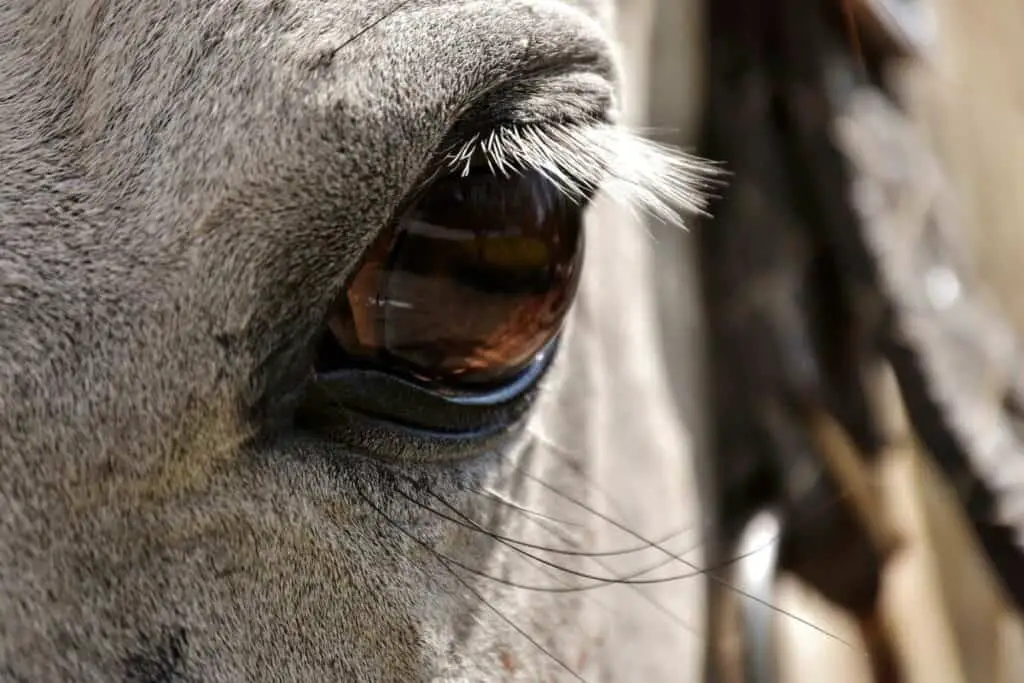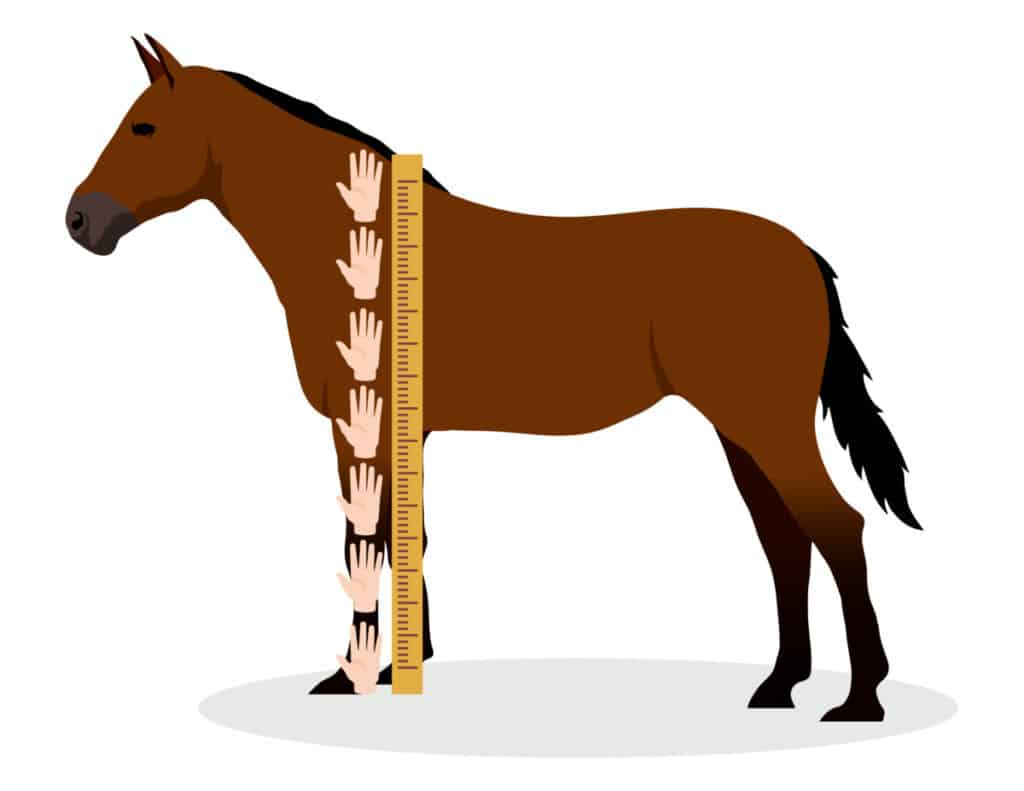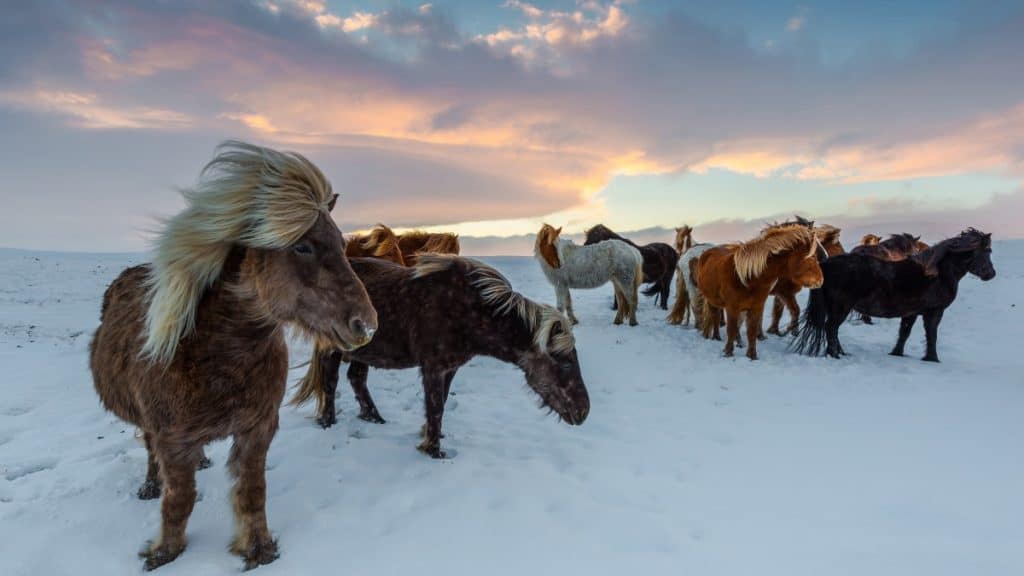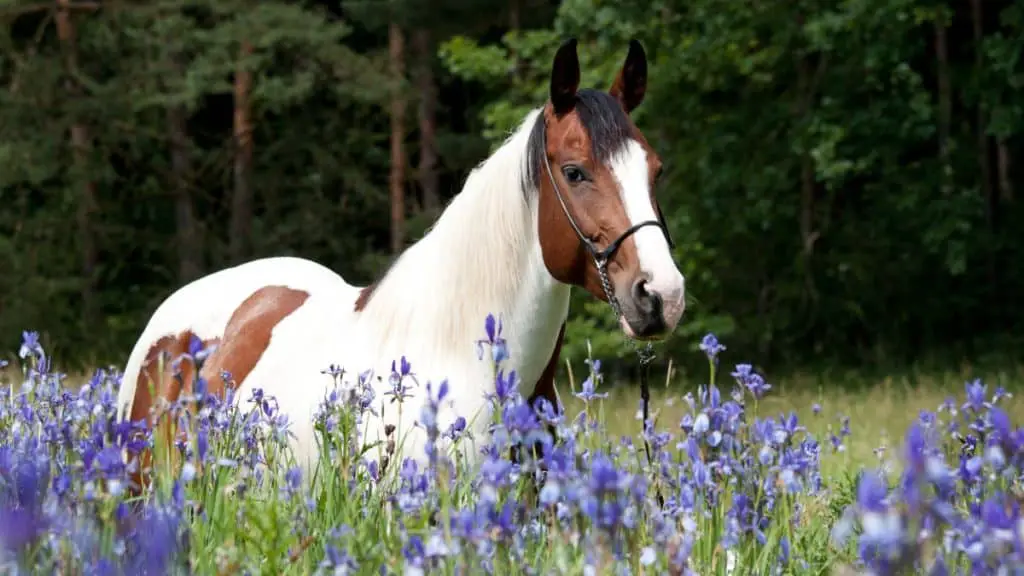Skip To Section
Horses have been a loyal and friendly companion of humans since time immemorial. From hunting expeditions to historic wars to modern-day horse races, they have been with humans through thick and thin like best buddies.
We all know them as fascinating creatures that you can ride on, but believe it or not, there’s a lot more to explore about them.
Below are 30 really interesting and fun horse facts:
1. Horses Have The Largest Eyes Among All Land Mammals

The eyes of horses are placed laterally (on the sides of their head), as opposed to the frontal placement of human eyes, which give us binocular vision. This placement of their eyes makes for monocular vision, thereby expanding their field of vision for locating predators.
2. They Have Superior Vision
Another interesting fact about horses’ eyes is their ability to perceive and judge physical distance even at high speed.
Horses can assess conditions of the ground to make for a quick escape from predators. Also, horses have a remarkable visual focus for far-off objects, but the same becomes less focused on objects within a meter’s distance. They also nearly have a 360-degree vision of their surroundings.
3. There Are Over 350 Different Types Of Horses

So far, over 350 breeds of horses have been identified by zoologists.
The huge variety of horses comes from the way their natural or selective breeding takes place. From casual riding to racing to running chores, each breed of horse possesses special qualities.
4. Age Can Be Determined By Looking At Horses Teeth
The age of a horse can be determined by looking at its teeth. However, the exact age cannot be said.
Adult horses generally have thirty-six to forty-four permanent teeth, which can be divided into four canines, twelve incisors, four wolf teeth, and twenty-four cheek teeth. Also, mares are generally seen to have a fewer number of teeth compared to geldings or stallions.
5. Horses Can’t Burp Or Vomit
Horses are a creature that’s incapable of burping or vomiting. Equines like horses have a strong valve located between their esophagus and stomach known as a cardiac sphincter.
This value in horses is not like that present in other land mammals. It has great strength which is why horses are unable to relax it to let food or water reflux through their esophagus.
6. Their Average Lifespan is 25 to 30 Years
The average lifespan of a horse is seen to be somewhere between 25 and 30 years of age. A horse is considered an adult only when it attains the age of four. Most consider it to be senior when it attains fifteen to eighteen years. This is the age when they begin to slow down and show less vigor.
Find out the factors that determine how long a horse can live by reading our definitive guide.
7. The Oldest Horse Lived For 62 Years
The oldest horse lived for sixty-two years. Its name was Old Billy. It was a barge horse from the 19th century and hailed from Lancastershire, England.
The horse was born in 1760 and died on 27th November 1822. The taxidermy head of the horse can be seen at Bedford Museum and the Cecil Higgins Art Gallery.
8. Horses Are Measured In “Hands”

The height of horses is measured in a unit called “hands” or hh. The tallest horse to have existed was a Shire horse measuring 2.20 m or 21.25 hh. Its name was Sampson, who was born in Bedfordshire, England in 1846. The tallest horse to have lived was Big Jake, a Percheron gelding measuring 20.2 hh.
9. Their Skeletons Have One Less Bone Than A Human
The skeleton of horses is generally made up of 205 bones, which is just one less from the human skeleton.
The spinal column of Arabian horses can feature fewer bones, and this breed has only seventeen ribs, as opposed to eighteen in most horses. Eight of horses’ ribs are called “true ribs” as they connect the sternum and the spinal column. The remaining ones are “floating ribs” because they don’t reach the sternum.
10. Horses Can Sleep Whilst Standing
One of the interesting facts about horses is that they can fall asleep both in a standing and horizontal position. It is noteworthy that they can fall asleep horizontally only for a short period of time. That’s because the position puts a lot of pressure on their internal organs and bones. However, according to popular belief, a horse sleeps horizontally when it is sick.
11. They Can Reach An Average Speed Of 27 Miles Per Hour
The average speed at which a horse can gallop is 27 miles per hour.
Amongst all horse breeds, the American Quarter Horse is seen to be the fastest, galloping at a speed of 55 miles per hour. In fact, 55 mph is the fastest ever recorded sprint speed of a horse in the world.
12. Horses Smile To Smell Things Better
It’s a popular notion that horses smile to express their happiness. They are often shown in pictures “smiling” or “laughing.” But, in reality, such a gesture of horses is not an expression of their happiness. It is, in fact, a way for them to be able to smell things better.
13. Equines Are Herbivores

Horses follow a plant-based diet. Lions are carnivores (eating only meat), humans are omnivores (eating both plants and meat), and equines are herbivores (eating only plants).
The position of their eyes, the formation of their teeth, and their digestive system are typical of herbivorous animals. Horses are capable of drinking at least 5 gallons of water on a given day. At the same time, they produce about ten gallons of saliva per day.
14. They Are Herd Animals

Horses are essentially herd animals. Wild horses romp around in small to large herds. Even horses that are domesticated like it when they have another equine companion. Living alone is seen to cause them stress. So, it’s always preferable for horse-lovers to buy and domesticate them in pairs.
15. Horses Have Been Domesticated For Over 5,000 Years
Humans have domesticated horses for more than 5,000 years. Human relationships with horses have traversed multiple phases over the centuries. But it’s the ability of horses to perform laborious tasks like pulling carts with humans and other loads have been long recognized by humankind.
16. Their Breathing Rate Can Change Drastically Between Resting And Carrying Out Intensive Tasks
The respiratory rate of a resting horse is about four breaths a minute. This rate is usually low for horses at rest, but can quickly increase depending on the physical exertion that the animal is subjected to.
During excessively intense tasks, the respiration rate of horses can jump to 120 breaths a minute. It’s important to keep track of the TPR to know if there is any distress, infection, or pain that the horse is experiencing.
17. They Are Emotional And Empathetic Creatures
Horses are somewhat emotional and empathetic creatures because they are capable of understanding and interpreting human emotions. Horses have the ability to read the facial expressions of humans and remember their previous emotional state. This makes their behavior quite adaptable.
18. Foals Have Soft Tissue Around Their Hooves That Protects Their Mother Before And After Birth
When foals (baby horses) are born, there’s a soft tissue that covers their hooves. This tissue prevents any damage from being caused to the mother’s uterus and birth canal. The names of this protective tissue are golden hooves, fairy slippers, foal slippers, gills, leaves, and fingers.
19. A Horse Brain Is Half The Weight Of A Human
The weight of the brain of a horse is 623 grams or 22 ounces, which is half the weight of a human brain. Also, horses are seen to have smaller frontal lobes, which is why they are more likely to be reactive. It has intelligence, but the way they think and act is different.
20. White Horses Are Usually Born Dark In Color
Most white horses are gray in color. They have a much darker color when they are born and eventually turn white. Therefore, the “white” horses may start as chestnut, bay, or black, but start turning gray as they age.
21. Horses And Zebras Normally Reproduce A Sterile Foal
Horses and zebras can be crossed to reproduce a foal, but it is most likely to be sterile. Horses and zebras may look alike in the sense that both are equines, but both are different species of animals, and both have different chromosome numbers.
22. They Naturally Have 5 Gaits
Horses naturally have five gaits. Some horse breeds are trained to show more gaits. It is interesting to note that horses have another ten artificial gaits. Tolt and Piaffe are two of the lot.
23. There Are No Albino Horses
Albino horses don’t exist. But there are a couple of colors of horses that make them look purely white. These include cremello, sabino, and perlino. Some horses are born very pale and have blue eyes at birth. Such horses tend to have white syndrome and often die immediately after birth.
24. Some Have Been Known To Eat Meat
One of the strangest facts is that there are some carnivore horses. These horses can eat dairy and meat. Horse breeds like the Arabian horse and Akhal Teke are often given camel milk and meats to help them survive in hot desert habitats.
25. 8 Feet And 1¼ Inches Is The Highest Jump Recorded
The highest jump by a horse recorded so far is eight feet, one and quarter inches. This record is held by Huaso on 5th February 1949 and was ridden by Captain Alberto Larraguibel in Vina del Mar, Chile.
26. Horses Make Different Noises For Different Situations

Neighing and whinnying sounds of horses are elicited when they meet or leave each other. Adult male horses, called stallions, let out loud roars when it’s time to mate. All horses use snorts to alert each other about potential danger.
27. We Can Determine If A Horse Is Cold By Touching Their Ears
One can tell if a horse is feeling cold just by touching and feeling the back portion of its ears. If the area is cold, then the horse is feeling cold and requires a cover.
28. They Have A Strong Presence In Astrology
Horses have astrological significance too. The animal is one of the twelve signs of the Chinese zodiac. People born in the year of horses as per the Chinese horoscope are considered free-spirited, independent, and intelligent.
29. Horses Are Not Native To The American Continent
Contrary to popular belief, horses are not native to the American continent. The Americas certainly saw the first species of horses develop, but they became extinct for a considerably long period. They returned to the continent with colonizers like Christopher Columbus. Today, they exist in all continents of the world except Antarctica.
30. They Have 10 Ear Muscles
Horses have ten ear muscles, while we humans have just three. This means that the ears of horses can move 180 degrees. Interestingly, horses also communicate with other horses using their ears.
The above are some of the interesting, probably unknown, facts about horses. Surely, these facts are going to change your perception of this awesome animal.
31. Horses Can’t Breathe Through Their Mouths
Unlike humans horses only use their noses to breathe.
